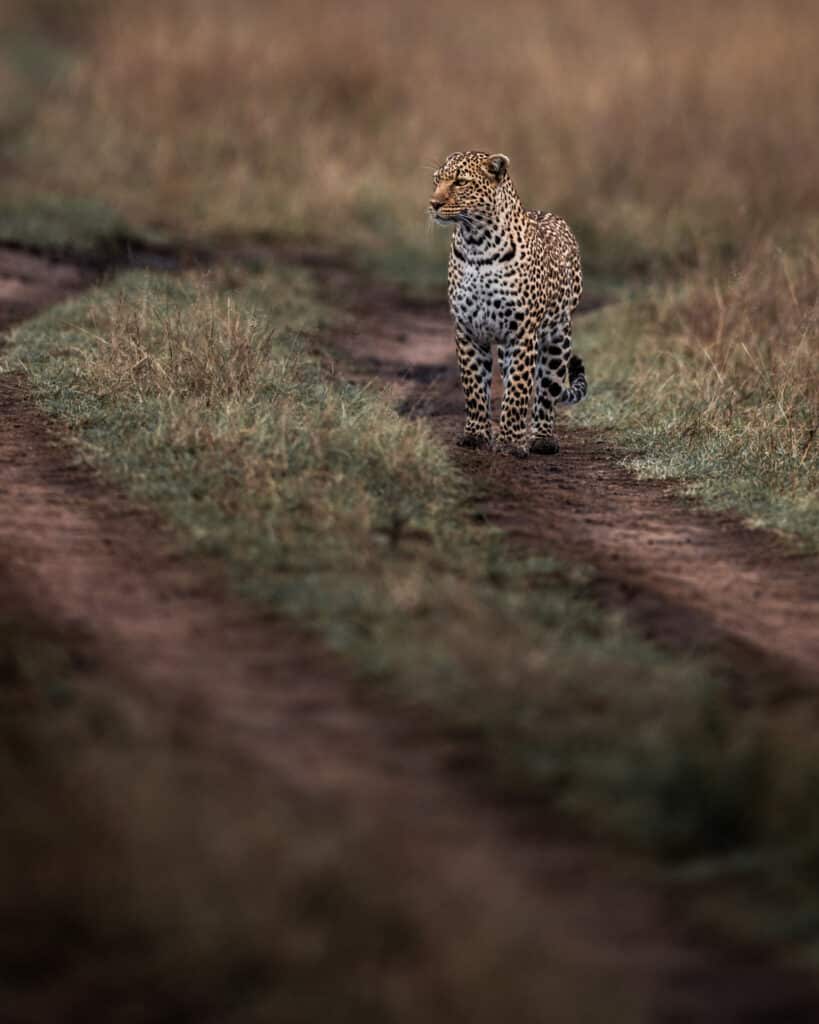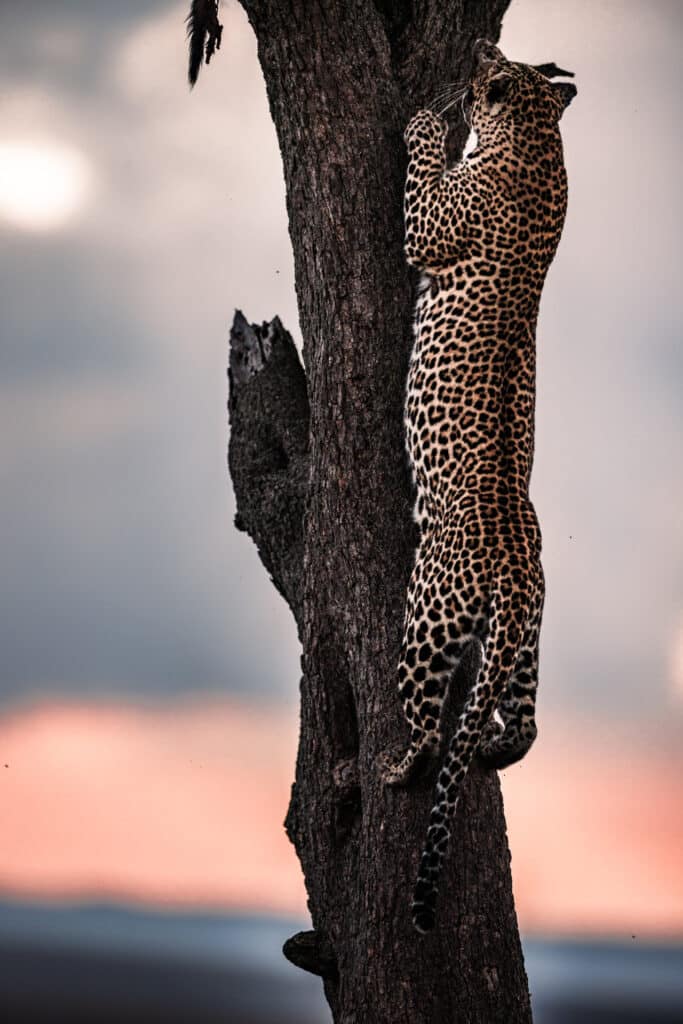As photographers, we have little control over our environment and this is what makes wildlife photography so exciting. Photographic opportunities are highly dependent on being in the right place at the right time, and even when they occur, they are often fleeting, lasting just a few seconds. The unknown reigns supreme and all we can rely on are subtle cues or ‘Isharas’ and an open heart to guide us. What we can control is the time we depart, how long we spend in the field, and our camera settings; the rest is up to nature.

Witnessing nail-biting action feels like winning the lottery, and what I am about to take you through is one such unbelievable sighting.
It was a hot and dry day and we had spent over 8 hours driving along the Mara River without any noteworthy sightings. We persisted, fueled by optimism and the convivial company of enthusiastic guests, and as we drove south, the Sand River landscape kept us enthralled. There was still an inkling that we could be in for a treat, though none of us knew where it would come from based on the type of day it had been.

The weather in the Mara can change quite unexpectedly, and we found ourselves suddenly caught between two storm clouds towering over the plains, rapidly turning into heavy gusts of wind and some of the most intense rainfall I have ever experienced. After a 15-minute downpour it passed. We were completely drenched and to some extent dispirited, but intuition and past experiences have taught me that the most arduous path often bears the sweetest fruit, so we chose to keep going.

Navigating through the precarious backroads was no easy affair. Our Landcruiser skidded across the heavy mud, the tyres struggling to find traction. Solomon, our guide, put his deft all-terrain driving skills to full use. As we continued through the quagmire, he succeeded in tracking down Luluka, the Mara’s star leopardess, who was basking in the evening rays just a few metres from the road and exuding her usual elegance. We glanced at each other and grinned, elated at having found a reward for our perseverance. We photographed her as she strolled playfully through the open plains.
About 600 metres away, her daughter, Jilime had a kill tucked atop a balanite tree and was feeding. As we drove towards her, I had a feeling that her path would cross with that of her mother, who was heading in that general direction. We were however oblivious to what we were about to witness.
At the base of the tree, a jackal was aggressively pacing around and frantically barking. Jackals form lifelong pairs, and a glimpse into the canopy revealed that Jilime had one hoisted there, presumably the partner of the bereaved jackal below. The tormented barks conveyed the jackal’s pain of loss, and witnessing this relentless cycle of life and death in the wild is an experience that never fails to stir profound emotions within.
As evening descended, we noticed movement in the long grass. The once-playful Luluka was now advancing towards the tree growling deeply, her mouth foaming uncontrollably with rage the closer she got. We had seen the pair bicker from time to time when they met but had never seen her display such hostility towards her daughter who had begrudgingly been allowed to coexist within the same territory since their separation.

Within seconds, Luluka sprung up into the tree and viciously attacked Jilime, initiating a violent exchange that thundered through the atmosphere. This abrupt altercation left Jilime disoriented, dislodging her and the carcass, both falling to the ground.


Luluka swiftly descended and began circling her daughter, each hissing at the other as the pressure mounted. The bereft jackal continued to protest, creating another annoyance for the pair to contend with. Jilime lost control, violently striking her mother on the nose but quickly realized that this was the wrong move. Luluka enforced her authority over her naïve daughter with a series of strategic manoeuvres, overcoming her progeny effortlessly and with the ruthlessness of a trained martial artist. It was a spectacle to behold; a masterclass in the art of battle.



At face value this episode seemed perplexing, but Jilime is now an independent leopardess and is seen as a threat by Luluka. Leopard cubs remain with their mother until about two years of age—a long, crucial period where they learn all the necessary skills to hunt, forage, feed and survive in the wild. Thereafter they are exiled to find their own territory.



We later received news that Luluka has just given birth to two cubs near the area, bringing further clarity on her motives to ward away Jilime.

Days like this tend to live in the archives of the mind and heart forever. I often dreamed of capturing leopards and lions as a child but never really thought it would happen. Venturing into the wild to photograph the splendour and very soul of these beautiful animals is not only an adrenaline rush but a privilege. Amidst the stillness and the chaos, things you never thought possible can happen. Follow the signs and live that which makes you feel blissfully alive.
Photo credits: Eric Averdung